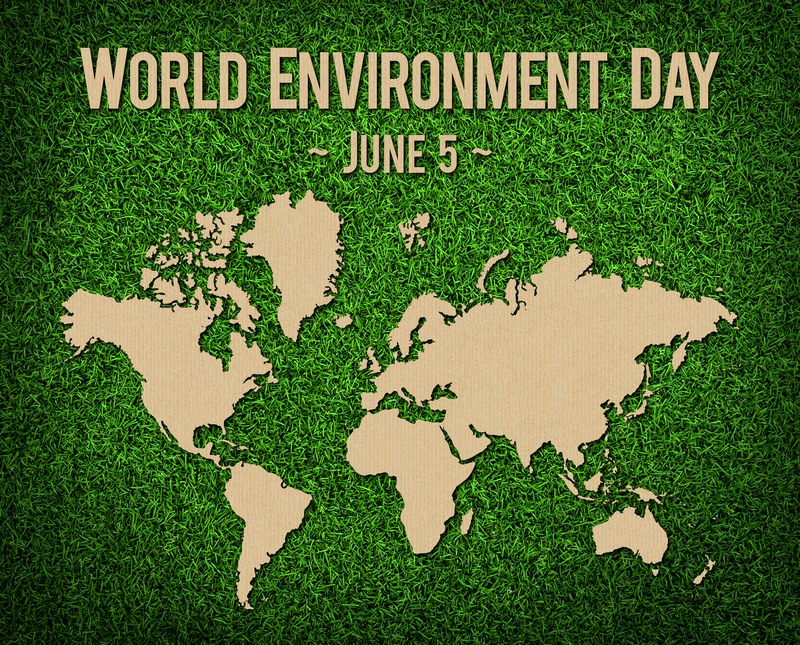The Right Way to Manage and Dispose of PPE Waste
The widespread use of personal protective equipment (PPE) has become an essential aspect of personal and public safety, especially since the COVID-19 pandemic. However, the exponential increase in PPE waste--including masks, gloves, face shields, and gowns--has created a new set of environmental and health challenges that require immediate and effective solutions. Proper management and safe disposal of PPE waste is vital in minimizing environmental impact, reducing health risks, and ensuring a sustainable future.

Understanding PPE Waste: What Is It?
Personal Protective Equipment (PPE) waste encompasses all discarded items designed to protect individuals from infections, chemicals, or physical hazards. Common examples include:
- Face masks (surgical masks, N95 respirators, cloth masks)
- Gloves (latex, vinyl, nitrile)
- Face shields and goggles
- Protective gowns and aprons
- Coveralls and shoe covers
Unfortunately, most PPE items are single-use and made from non-biodegradable materials, such as plastics and synthetic fibers. When disposed of incorrectly, these items can persist in the environment for decades, posing serious threats to humans, animals, and ecosystems.
Why Proper PPE Waste Management Matters
The improper disposal of PPE has far-reaching consequences, such as:
- Environmental pollution: PPE waste, especially plastics, contributes to land and ocean pollution, harming wildlife and contaminating food chains.
- Health risks: Used PPE may be contaminated with pathogens. Mishandling can lead to the spread of infectious diseases.
- Clogged sewage systems: Flushed masks and gloves can block drains and sewer lines, causing overflows and municipal crises.
For these reasons, adopting the right PPE waste management practices is crucial at both the individual and organizational levels.
Best Practices for Managing PPE Waste
1. Segregating PPE Waste Properly
The right way to manage PPE waste starts with its separation at source. This is a critical step in preventing cross-contamination and facilitating safe disposal or treatment. Here's how to do it effectively:
- Designate separate bins exclusively for PPE waste.
- Color-code bins: Use yellow or red bags/containers labeled 'PPE Waste' for easy identification.
- Avoid mixing PPE waste with regular household or office waste.
- Seal bins properly to limit exposure and handling.
*It is particularly recommended to handle this step with care in healthcare facilities, laboratories, and workplaces where PPE is extensively used.*
2. Safe Collection and Handling
Once PPE waste is placed in dedicated containers, its safe handling is vital. Follow these steps:
- Wear appropriate PPE (gloves, mask) when collecting waste to protect yourself from possible contaminants.
- Avoid compressing or shaking waste bags, as this can spread contaminants.
- Regularly disinfect collection bins to minimize the risk of infection.
3. Transportation of PPE Waste
Transporting PPE waste--especially on a large scale--should follow local regulations and guidelines:
- Use leak-proof and clearly labeled containers for safe transport.
- Minimize the distance between collection and treatment/disposal sites to reduce mishandling risks.
- Do not overload waste transport vehicles. Ensure they are disinfected after each trip.
4. Treatment and Disposal Methods for PPE Waste
The proper disposal of PPE waste largely depends on its type and contamination level. Here are effective PPE waste disposal methods:
- Incineration: High-temperature incinerators effectively destroy pathogens and reduce waste volume. This is suitable for medical-grade PPE.
- Autoclaving: For healthcare settings, autoclaves use steam sterilization before landfill disposal. This is eco-friendlier but may not work for all plastics.
- Landfilling: After sterilization, non-recyclable PPE waste can be sent to sanitary landfills. Ensure it's not mixed with general waste.
- Recycling (where possible): Some PPE, like certain masks or gowns, can be recycled if uncontaminated. Dedicated recycling programs are emerging for this purpose.
5. Educating and Training Stakeholders
Properly managing PPE waste is a collective effort--a comprehensive training and awareness program can vastly improve compliance. For organizations:
- Conduct regular PPE waste management training for all employees and janitorial staff.
- Share clear, visual guidelines on proper segregation, collection, and disposal procedures.
- Highlight the health and environmental risks associated with improper PPE waste disposal.
How Individuals Can Dispose of PPE Waste Responsibly
PPE waste management is not just the responsibility of medical centers or large businesses; individuals play a crucial role too. Here are simple PPE disposal tips everyone should follow:
- Never toss used PPE in regular recycling bins. Most municipal recycling programs cannot process contaminated PPE.
- Seal used masks and gloves in a plastic bag before disposal in the household trash.
- Avoid littering! Always use the nearest covered waste bin for disposing of PPE.
- Wash your hands thoroughly after handling used PPE, even if you wore gloves.
- Check local guidelines for community drop-off points, especially for bulk PPE disposal or during outbreaks.
What Not to Do with PPE Waste
- Do not burn PPE waste at home or in open spaces. This releases toxic fumes and contributes to air pollution.
- Don't flush masks, gloves, or wipes down toilets or drains. They can cause plumbing blockages and pollute waterways.
- Avoid reusing single-use PPE, as it compromises safety and hygiene.
Reducing PPE Waste: Prevention Is Key
While safe management and disposal are essential, prevention is even better. Here's how you can help minimize PPE waste in the first place:
- Choose reusable PPE where appropriate--fabric masks and protective gowns can often be washed and reused.
- Use PPE responsibly: Avoid overuse or unnecessary disposal. Change PPE only as needed--following relevant health guidance.
- Support recycling initiatives: Some organizations and companies have introduced collection and recycling programs for PPE. Participate where available.
- Advocate for green PPE: Encourage suppliers and manufacturers to develop biodegradable or recyclable PPE products.
PPE Waste Management in Healthcare Facilities
Healthcare settings produce significant volumes of PPE waste daily. Proper management in these environments requires strict protocols due to the high risk of infection. Key practices include:
- Follow local, national, and WHO guidelines for infectious and hazardous waste management.
- Use double-bagging for PPE from contaminated zones.
- Install adequate signs and bins in every ward and entry point.
- Train staff routinely on updated protocols for handling and disposing of infectious PPE waste.
- Implement regular audits to ensure compliance and spot improvement areas.
Hospitals and clinics should always use incineration or certified treatment facilities to dispose of their PPE waste safely. Never send untreated medical PPE to municipal landfills.
Addressing Myths and Common Mistakes Around PPE Waste Disposal
There is widespread misinformation about PPE waste management. Let's clear up a few common misconceptions:
- Myth: PPE can be recycled in normal plastic recycling.
- Fact: Most single-use PPE is contaminated and made from mixed materials, making it unsuitable for regular recycling streams.
- Myth: Used masks break down easily in the environment.
- Fact: Most masks are made of polypropylene--a plastic that can persist for hundreds of years in landfills or oceans.
- Myth: PPE waste doesn't matter as long as it's 'out of sight.'
- Fact: Incorrectly handled or disposed PPE poses long-term risks to urban infrastructure, landfill health, wildlife, and human wellbeing.

PPE Waste Innovations and the Path Forward
Thankfully, new PPE waste management solutions are emerging:
- Recycling programs: Specialized processes are being developed to recycle uncontaminated PPE into products like construction materials and furniture.
- Biodegradable PPE: Research is paving the way for masks and gloves made from natural fibers that decompose safely.
- Energy recovery: Advanced incineration techniques convert PPE waste to energy, reducing landfill pressure.
- Digital tracking: IoT and smart bins help monitor PPE waste generation and optimize collection schedules.
Final Thoughts: Our Shared Responsibility
As the use of personal protective equipment shows no signs of abating, the challenge of managing and disposing of PPE waste responsibly must be met with collective action and informed practices. Whether you are a healthcare professional, business owner, or member of the general public, your efforts make a big difference.
- Always follow best practices for PPE waste disposal--from safe segregation to choosing sustainable options when available.
- Stay updated with local waste management guidance as practices and facilities evolve.
- Encourage education and awareness within your community to ensure a cleaner and healthier future for all.
The right way to manage and dispose of PPE waste is not just an environmental necessity--it's a moral obligation. Embrace responsible habits today, and help safeguard the planet for generations to come.